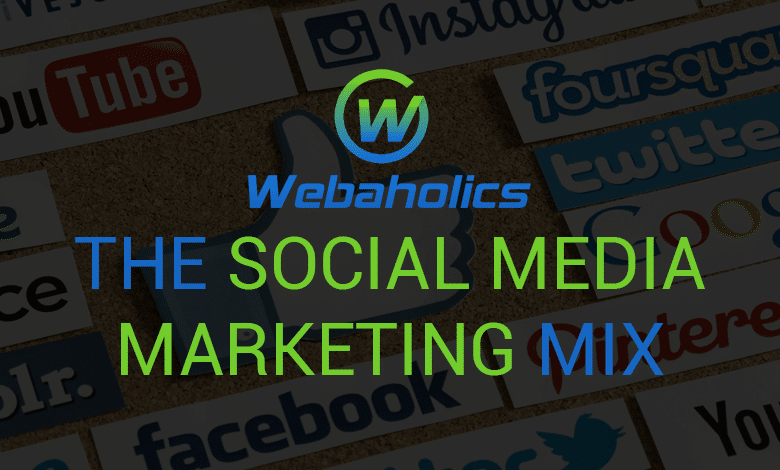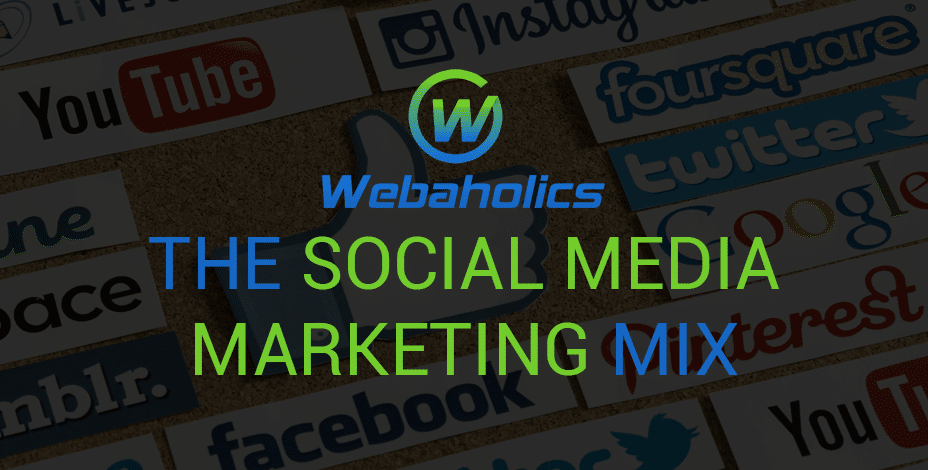
Digital Marketing Media Mix A Comprehensive Guide
Digital marketing media mix is the key to unlocking online success. This guide dives deep into crafting a powerful and effective strategy, examining everything from defining the ideal mix to optimizing its performance over time. We’ll explore various channels, from social media to email marketing, and how to use them in a balanced and targeted way to achieve your business objectives.
Get ready to transform your online presence!
The guide meticulously details each stage of developing, implementing, and refining a digital marketing media mix. It covers the foundational elements, including identifying target audiences and choosing the right channels, as well as advanced strategies like A/B testing and analyzing performance data. This in-depth approach ensures that you have all the tools and insights to maximize your digital marketing efforts.
Defining the Media Mix
A digital marketing media mix is a strategic approach to reaching target audiences across various online platforms. It’s not just about choosing any channel; it’s about thoughtfully combining different digital marketing tools to maximize impact and ROI. This approach allows businesses to tailor their messages to specific demographics and interests, ultimately driving engagement and conversions.The key to a successful digital marketing campaign often lies in a well-defined and balanced media mix.
A balanced mix ensures that resources are allocated effectively across diverse channels, avoiding over-reliance on any single platform. This approach also allows businesses to adapt their strategies in response to changing market trends and consumer behaviors.
Key Components of a Digital Marketing Media Mix
A comprehensive digital marketing media mix incorporates several key elements. These components work together to create a cohesive and impactful strategy. A mix of these strategies ensures the target audience receives consistent messaging across different platforms, which strengthens brand recognition and memorability.
Importance of a Balanced Digital Marketing Media Mix
A balanced digital marketing media mix is crucial for optimal campaign performance. It avoids over-reliance on any single channel, ensuring that the campaign can adapt to changing market conditions and consumer behaviors. By diversifying strategies, businesses can reduce the risk associated with relying on a single channel, as a shift in consumer behavior could negatively impact a campaign that relies too heavily on one approach.
This diversification also allows for a more thorough understanding of customer preferences and behaviors.
Digital Marketing Channels and Examples
A successful media mix often involves strategically utilizing various digital marketing channels. This approach ensures the campaign resonates with the target audience across different platforms. Understanding the unique strengths and weaknesses of each channel is vital for optimal campaign performance.
| Channel | Description | Example Use Case |
|---|---|---|
| Social Media Marketing | Reaching target audiences through platforms like Facebook, Instagram, Twitter, and TikTok. | Running contests and giveaways on Instagram to increase engagement and brand awareness. |
| Search Engine Marketing (SEM) | Utilizing paid advertising on search engines (like Google Ads) to drive traffic to websites. | Running targeted ads for specific s related to a product or service to attract potential customers searching for similar products. |
| Email Marketing | Reaching customers directly through email campaigns. | Sending newsletters with updates on new products or services, promotions, or company news. |
| Content Marketing | Creating valuable and engaging content (blog posts, articles, videos) to attract and retain customers. | Publishing informative blog posts that educate customers about a product or service, positioning the company as an industry expert. |
| Paid Social Media Advertising | Targeted advertising campaigns on social media platforms. | Running ads on Facebook targeting specific demographics and interests to increase brand visibility. |
| Influencer Marketing | Collaborating with influencers to promote products or services to their audience. | Partnering with relevant influencers to showcase products or services to their followers. |
| Affiliate Marketing | Collaborating with affiliates to promote products or services through their websites or channels. | Creating a network of affiliates to increase brand awareness and drive sales. |
Choosing the Right Channels
Picking the right digital marketing channels is crucial for any successful campaign. It’s not just about slapping ads across every platform; it’s about strategically selecting the channels that best resonate with your target audience and drive the desired results. Understanding your audience’s online behavior and preferences is paramount in maximizing the impact of your chosen channels.Effective channel selection involves a deep dive into your business objectives and target audience.
The channels you choose should align perfectly with your campaign goals, whether it’s brand awareness, lead generation, or sales. Different channels offer varying strengths and weaknesses, and understanding these nuances is essential for a tailored strategy.
Factors to Consider When Selecting Channels
Choosing the right digital marketing channels requires careful consideration of several key factors. These factors include your budget, target audience demographics, and the specific campaign goals. A thorough understanding of your target audience is essential to ensure your message reaches the right people.
Identifying Target Audience for Each Channel
Identifying your target audience for each channel involves a granular understanding of their online behavior and preferences. Different platforms attract different types of users. For example, a platform popular with young professionals might not be ideal for reaching a senior citizen demographic. Understanding the demographics and psychographics of your target audience for each platform is crucial for effective targeting.
Crafting a strong digital marketing media mix is crucial, and understanding how to effectively utilize different platforms is key. One often-overlooked area is Instagram TV, where you can optimize video content for maximum impact. For example, learning how to reformat your videos for Instagram TV, like in this guide on 6 ways reformat videos instagram tv , can significantly boost your reach and engagement.
Ultimately, mastering diverse video formats within your digital marketing strategy is a significant step toward success.
Comparing and Contrasting Digital Marketing Channels
Various digital marketing channels offer distinct strengths and weaknesses. Search Engine Marketing (SEM) excels at driving immediate traffic to your website, while Social Media Marketing (SMM) is strong at building brand awareness and fostering engagement. Email marketing is effective for nurturing leads and building customer relationships. Understanding the strengths and weaknesses of each channel is crucial for creating a well-rounded media mix.
Developing a Tailored Digital Marketing Media Mix for a Specific Industry
Developing a tailored digital marketing media mix involves understanding the specific needs and characteristics of a particular industry. For example, a B2B SaaS company might prioritize LinkedIn and industry-specific forums, while an e-commerce retailer might heavily rely on social media platforms and search engine marketing. The media mix should be adapted to the specific industry context.
Examples of Different Media Mixes Used in Similar Industries
Consider two similar industries: online clothing retailers and furniture retailers. Clothing retailers often leverage Instagram and Pinterest for visual marketing, while furniture retailers might prioritize Google Shopping Ads and home-improvement websites. The media mix adapts to the product’s visual and purchasing nature.
Pros and Cons of Various Digital Marketing Channels
| Channel | Pros | Cons |
|---|---|---|
| Search Engine Marketing (SEM) | High visibility, immediate traffic, targeted ads | Cost-per-click can be high, requires ongoing management |
| Social Media Marketing (SMM) | Brand building, community engagement, targeted advertising | Requires consistent content creation, algorithm changes impact visibility |
| Email Marketing | Direct communication, lead nurturing, personalized messaging | Requires building an email list, potential for low open rates |
| Content Marketing | Establishes thought leadership, drives organic traffic, builds trust | Requires consistent effort, long-term strategy, and time to show results |
| Influencer Marketing | Reach a wider audience, build credibility, create social proof | Requires careful selection of influencers, potential for authenticity concerns |
Measuring and Analyzing Performance
Knowing your digital marketing efforts are paying off is crucial. Measuring performance allows you to understand what’s working, what’s not, and how to optimize your campaigns for better results. This is where data-driven decision-making truly shines, helping you refine your media mix for maximum impact.
Tracking Channel Effectiveness
A robust system for tracking the effectiveness of different channels in your media mix is essential. This involves meticulously monitoring key metrics to gauge the performance of each channel. A clear understanding of which channels resonate most with your target audience is key to optimizing your return on investment (ROI).
Key Performance Indicators (KPIs) for Each Channel
Different digital channels have distinct KPIs. Understanding these metrics allows you to assess the effectiveness of each channel within your broader marketing strategy. Analyzing performance data allows you to make adjustments and improve the overall campaign.
- Search Engine Marketing (SEM): Crucial metrics include click-through rate (CTR), cost-per-click (CPC), conversion rate, and quality score. These metrics help evaluate the efficiency and effectiveness of your paid search campaigns. For example, a high CTR indicates that your ad copy and targeting are highly relevant to potential customers.
- Social Media Marketing (SMM): Engagement metrics like likes, shares, comments, and follower growth are key. Tracking reach and impressions provides insight into your audience’s visibility of your content. Furthermore, website traffic from social media is a significant performance indicator. Analyzing the source of this traffic can reveal which platforms are driving the most valuable leads.
- Email Marketing: Open rates, click-through rates, and conversion rates are vital. Email marketing provides direct communication with potential customers, making the tracking of these engagement metrics critical for campaign success.
- Content Marketing: Website traffic, time spent on site, bounce rate, and social shares are key indicators. These metrics reflect the quality and relevance of your content to your target audience. Furthermore, analyzing the source of traffic to your website reveals how well your content is performing in search engine results.
Analytics Tools for Campaign Assessment
Utilizing analytics tools is crucial for comprehensive campaign assessment. These tools provide insights into campaign performance, allowing for adjustments and improvements.
- Google Analytics: Provides a wealth of data on website traffic, user behavior, and conversion rates. This tool is invaluable for tracking website traffic across various channels, identifying user engagement patterns, and evaluating the effectiveness of your digital marketing campaigns.
- Social Media Analytics: Tools provided by platforms like Facebook, Instagram, and Twitter offer insights into engagement metrics and audience demographics. These tools help you analyze the performance of your social media content and optimize your campaigns accordingly.
- Marketing Automation Platforms: Platforms like HubSpot or Marketo offer comprehensive analytics to track email marketing, lead generation, and other marketing activities. These tools provide valuable data to understand campaign effectiveness and improve ROI.
Adjusting the Media Mix Based on Performance Data
Analyzing performance data allows for informed adjustments to the media mix. This involves reallocating budget and resources based on the effectiveness of different channels.
- Reallocation of Budget: If a specific channel is underperforming, a portion of the budget can be reallocated to channels that demonstrate higher effectiveness. This is a critical step to optimizing ROI.
- Channel Optimization: Analyzing data can reveal areas for improvement within a particular channel. This may involve refining ad copy, adjusting targeting parameters, or improving content quality.
- Testing and Experimentation: Regular testing and experimentation across different channels provide valuable insights into campaign performance. By continuously analyzing and adapting your strategy, you can maximize the impact of your digital marketing efforts.
Key Metrics for a Successful Digital Marketing Media Mix
Tracking the right metrics is crucial for a successful media mix. This table Artikels essential metrics for evaluating campaign performance.
| Channel | Key Metrics |
|---|---|
| Search Engine Marketing (SEM) | CTR, CPC, Conversion Rate, Quality Score |
| Social Media Marketing (SMM) | Engagement (likes, shares, comments), Reach, Impressions, Website Traffic |
| Email Marketing | Open Rate, Click-Through Rate (CTR), Conversion Rate |
| Content Marketing | Website Traffic, Time on Site, Bounce Rate, Social Shares |
Optimizing the Media Mix
A well-defined media mix is only the starting point. Continuous optimization is crucial for maximizing ROI and ensuring your campaigns remain effective in a dynamic market. This involves adapting your strategy based on campaign performance and market trends, constantly refining your approach to achieve the best possible results.Effective optimization involves a multifaceted approach, moving beyond simply tweaking individual channels.
It requires a holistic understanding of the interplay between various media, allowing you to allocate resources efficiently and enhance overall campaign performance. Understanding how different channels contribute to the overall strategy is key to effective optimization.
Adapting the Media Mix Based on Campaign Results
Campaign performance data provides valuable insights into the effectiveness of different channels. Analyzing key metrics such as click-through rates, conversion rates, and cost-per-acquisition allows for a data-driven approach to reallocate resources. If certain channels consistently underperform, reallocating budget to more effective channels is a necessary step.
Identifying Areas for Improvement in the Media Mix
Identifying areas for improvement in your media mix is a critical aspect of optimization. This involves a thorough review of your existing strategies, considering factors such as campaign performance, market trends, and competitor activities. Analyzing data to pinpoint underperforming channels, ineffective ad copy, or poorly targeted audiences will highlight opportunities for improvement. Understanding your target audience is key to optimizing the media mix.
Budget Allocation Strategies Across Different Channels
Effective budget allocation is crucial for maximizing the impact of your media mix. A balanced approach considers the potential return on investment (ROI) of each channel. Prioritize channels demonstrating high conversion rates and lower costs per acquisition. For example, a channel with a high click-through rate but low conversion rate might need adjustments to landing pages or ad copy.
A/B Testing Framework for Comparing Media Mix Strategies
A/B testing allows you to compare different media mix strategies to determine which performs best. A well-structured framework is essential for meaningful results. It involves defining specific variables to test, creating control and experimental groups, and establishing clear metrics to measure the impact of changes. A critical component of A/B testing is careful selection of metrics to measure success.
Optimization Strategies Table
| Optimization Strategy | Description | Implementation Steps |
|---|---|---|
| Channel Performance Analysis | Identifying high-performing and low-performing channels based on key metrics. | Track key metrics (e.g., CTR, conversion rate, CPA) for each channel. Compare performance against targets and industry benchmarks. |
| Budget Reallocation | Shifting budget from underperforming to high-performing channels. | Identify channels with low ROI. Reallocate budget to channels with higher conversion rates and lower costs per acquisition. |
| A/B Testing | Comparing different media mix strategies to determine the most effective approach. | Define specific variables to test. Create control and experimental groups. Establish clear metrics to measure impact. |
| Market Trend Analysis | Adapting the media mix based on emerging trends and competitor activities. | Monitor market trends and competitor activities. Adjust channels and messaging to align with emerging trends. |
Case Studies: Digital Marketing Media Mix
Diving deep into the realm of successful digital marketing campaigns reveals valuable insights into crafting effective media mixes. Examining real-world examples allows us to understand not just the strategies employed, but also the measurable results achieved, and the crucial lessons learned along the way. These case studies highlight the power of a well-orchestrated media mix in achieving marketing objectives, from brand awareness to driving sales.Analyzing successful case studies provides a practical framework for building and optimizing our own digital marketing strategies.
By understanding how other businesses have leveraged different channels and tactics, we can identify opportunities for improvement and refine our own approach.
Crafting a killer digital marketing media mix is all about strategically choosing the right channels. Understanding the nuances between public relations and marketing is key, as they often overlap. For example, figuring out how PR efforts can support your overall marketing strategy, and vice versa, is crucial for a well-rounded approach. This is where the lines blur a bit, and a deeper understanding of PR vs marketing comes in handy.
Ultimately, a successful digital marketing media mix relies on knowing how each piece fits into the bigger picture.
Successful Digital Marketing Media Mix Examples
Understanding successful media mixes involves looking at the interplay of different channels. Each channel plays a specific role in the overall strategy, contributing to the ultimate goal. The effectiveness often depends on the careful selection of channels, the appropriate messaging for each, and the consistent monitoring of performance metrics.
Case Study 1: E-commerce Brand Utilizing a Multi-Channel Approach
This e-commerce company leveraged a diverse media mix to achieve substantial growth. Their strategy included a combination of paid search advertising (Google Ads), social media marketing (Instagram and Facebook), influencer collaborations, and email marketing. The company meticulously tracked the performance of each channel, allowing them to optimize their spend and allocate resources effectively. Their use of retargeting ads helped convert website visitors into customers.
Case Study 2: Software Company Utilizing Content Marketing and
A software company focused on building brand authority and generating leads employed a content marketing strategy combined with search engine optimization (). They produced high-quality blog posts, white papers, and case studies that addressed the pain points of their target audience. This content helped establish them as thought leaders in the industry and attracted organic traffic to their website.
Crafting a winning digital marketing media mix is key for any successful launch. A strong strategy requires careful consideration of various channels, and a skilled professional like Audria Richmond Marketing Launch Strategist can help you navigate this complex landscape. Audria Richmond Marketing Launch Strategist specializes in building comprehensive marketing campaigns that target the right audience across multiple platforms, ultimately leading to a cohesive and effective digital marketing media mix.
efforts ensured that their content ranked highly in search results, driving significant traffic and leads.
Case Study 3: Non-profit Organization Utilizing Social Media for Awareness Campaigns
A non-profit organization utilized social media platforms like Twitter and Facebook to raise awareness for their cause and mobilize volunteers. They engaged with their audience through interactive content, such as polls, quizzes, and live Q&A sessions. This approach built a strong community around their brand, resulting in increased donations and volunteer sign-ups.
Comparison of Media Mix Strategies
| Case Study | Primary Channels | Key Strategies | Results | Lessons Learned |
|---|---|---|---|---|
| E-commerce Brand | Paid Search, Social Media, Influencer Marketing, Email | Targeted advertising, retargeting, consistent messaging | Significant growth in sales, increased customer acquisition | Targeted advertising and retargeting campaigns are crucial for driving conversions. |
| Software Company | Content Marketing, | High-quality content creation, optimization | Increased brand authority, organic traffic, lead generation | Content marketing is a powerful tool for building brand authority and attracting organic traffic. |
| Non-profit Organization | Social Media (Twitter, Facebook) | Interactive content, community building | Increased awareness, volunteer sign-ups, donations | Social media can be effectively leveraged to build a community and mobilize support for a cause. |
Trends and Future of Digital Marketing Media Mixes

The digital marketing landscape is constantly evolving, with new technologies and platforms emerging at a rapid pace. Understanding these trends and their potential impact is crucial for businesses seeking to optimize their media mixes and achieve sustainable growth. Staying ahead of the curve allows businesses to leverage emerging opportunities and adapt to changing consumer behaviors.A successful digital marketing strategy requires a deep understanding of not only current trends but also anticipated future developments.
Proactive adaptation ensures a business remains competitive and maintains its effectiveness in reaching target audiences. This involves integrating emerging technologies into existing strategies while simultaneously identifying potential disruptions that could affect the overall media mix.
Current Trends in Digital Marketing Media Mixes
The current digital marketing media mix is characterized by a shift towards personalized experiences and a greater emphasis on user-centric strategies. Businesses are increasingly utilizing data-driven insights to refine their targeting and tailor content to individual preferences. This personalization extends across various channels, including social media, email marketing, and search engine optimization. The integration of artificial intelligence (AI) and machine learning (ML) plays a significant role in this personalization process.
Emerging Technologies and Their Impact
Emerging technologies are fundamentally reshaping the digital marketing landscape. The rise of technologies like augmented reality (AR), virtual reality (VR), and the metaverse presents new avenues for engagement and interaction. These technologies can create immersive experiences for consumers, fostering stronger brand connections and driving increased engagement. Additionally, advancements in AI and ML continue to enhance personalization and efficiency in marketing campaigns.
Examples of New Technology Integration
Businesses are actively integrating new technologies into their media mixes to enhance customer engagement and achieve specific marketing goals. For example, some companies are using AR filters on social media to encourage user-generated content and increase brand visibility. Others are leveraging VR experiences to provide interactive product demonstrations or virtual tours. Furthermore, AI-powered chatbots are becoming increasingly common in customer service and support roles, enhancing customer experience and efficiency.
Future Predictions for Digital Marketing Media Mixes
The future of digital marketing media mixes is poised for significant transformations. The metaverse is expected to become a more prominent platform for brand engagement, offering new possibilities for immersive experiences. Personalized marketing, powered by AI, will continue to evolve, delivering highly targeted and relevant campaigns. Further advancements in AI will also automate many aspects of digital marketing, including content creation, campaign optimization, and customer service.
How Businesses Can Adapt to Future Trends
Businesses can adapt to future trends by embracing a data-driven approach, investing in the necessary technologies, and cultivating a culture of continuous learning and innovation. They should also focus on building strong relationships with customers, fostering a sense of community around their brands, and creating personalized experiences that resonate with individual preferences.
Potential Impact of Emerging Technologies on the Media Mix
| Emerging Technology | Potential Impact on Media Mix |
|---|---|
| Augmented Reality (AR) | Enhanced customer engagement, interactive product demonstrations, personalized experiences. |
| Virtual Reality (VR) | Immersive brand experiences, virtual product tours, interactive training. |
| Metaverse | New avenues for brand engagement, virtual events and experiences. |
| Artificial Intelligence (AI) | Personalized marketing, automated campaign management, predictive analytics. |
| Machine Learning (ML) | Improved targeting, enhanced customer segmentation, dynamic content optimization. |
Epilogue

In conclusion, mastering the digital marketing media mix is crucial for any business aiming for online growth. This guide has provided a comprehensive overview of the process, from initial definition to ongoing optimization. By understanding the importance of a balanced approach, selecting the right channels, measuring performance, and adapting to trends, you can create a successful and sustainable online presence.
The future of digital marketing lies in a well-structured media mix, and this guide equips you to navigate it effectively.





